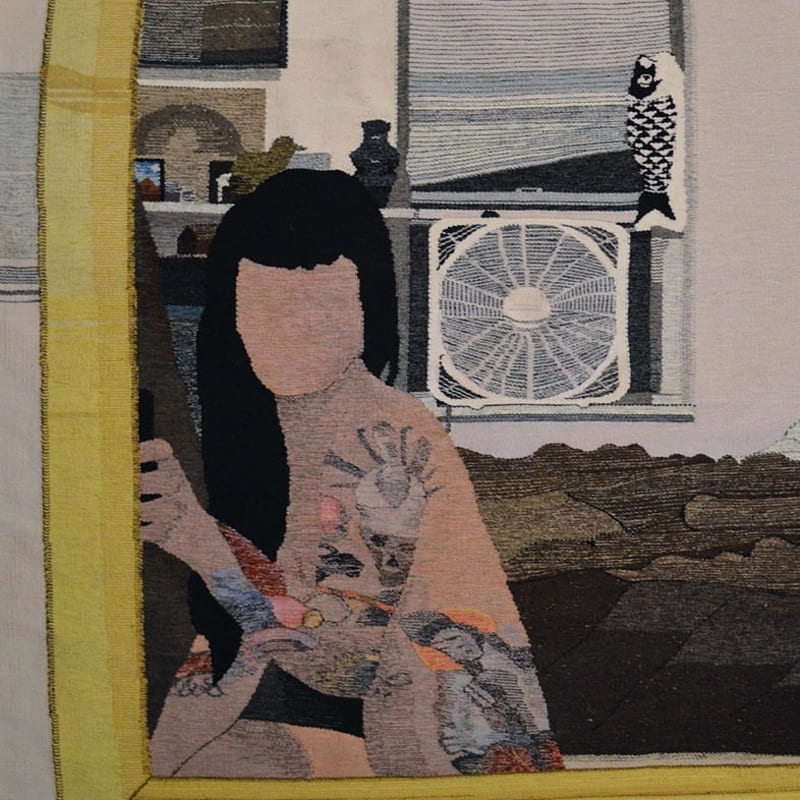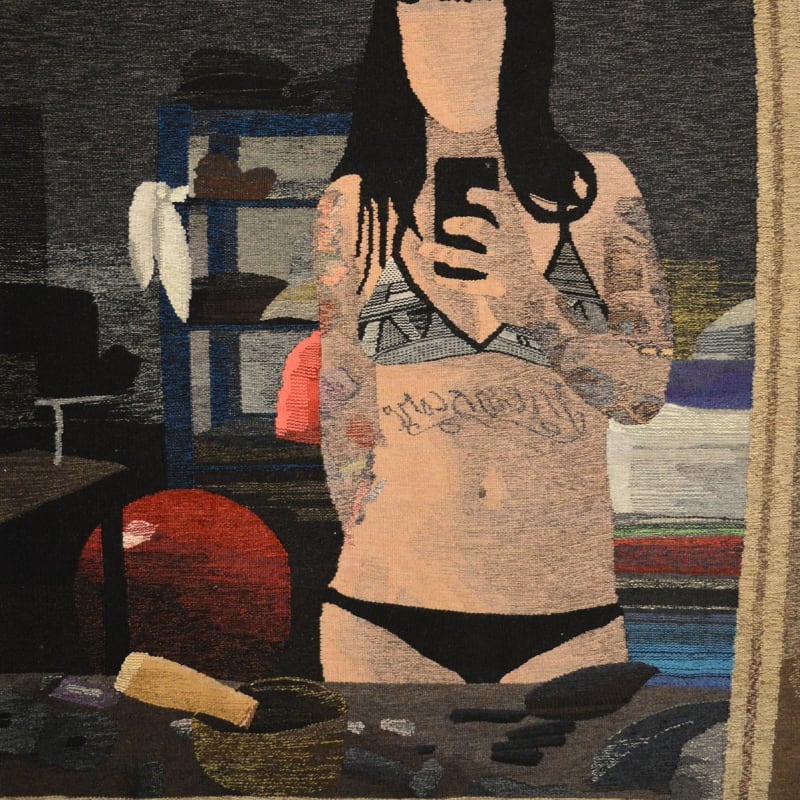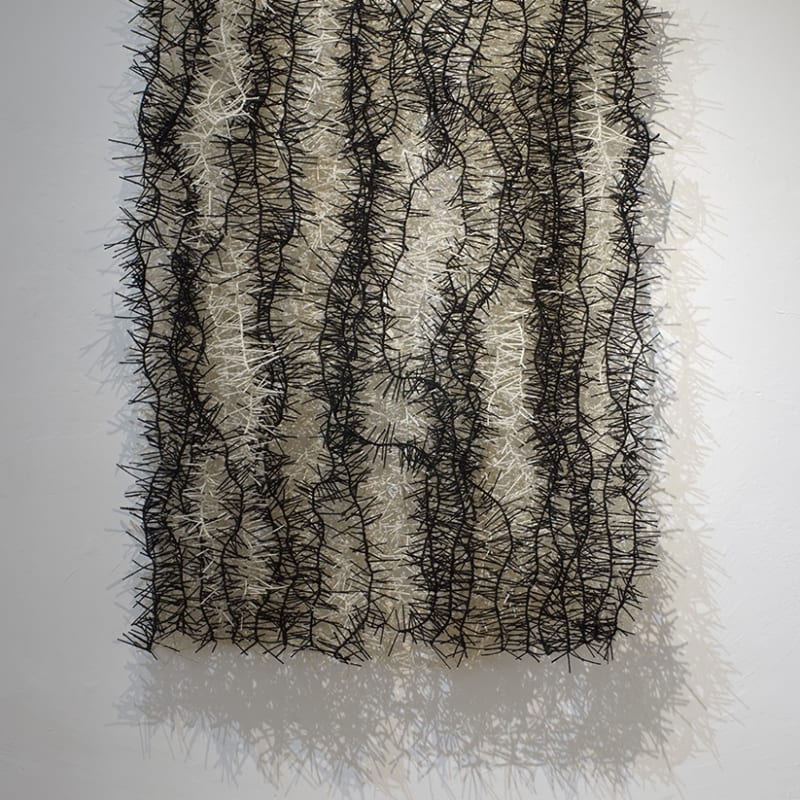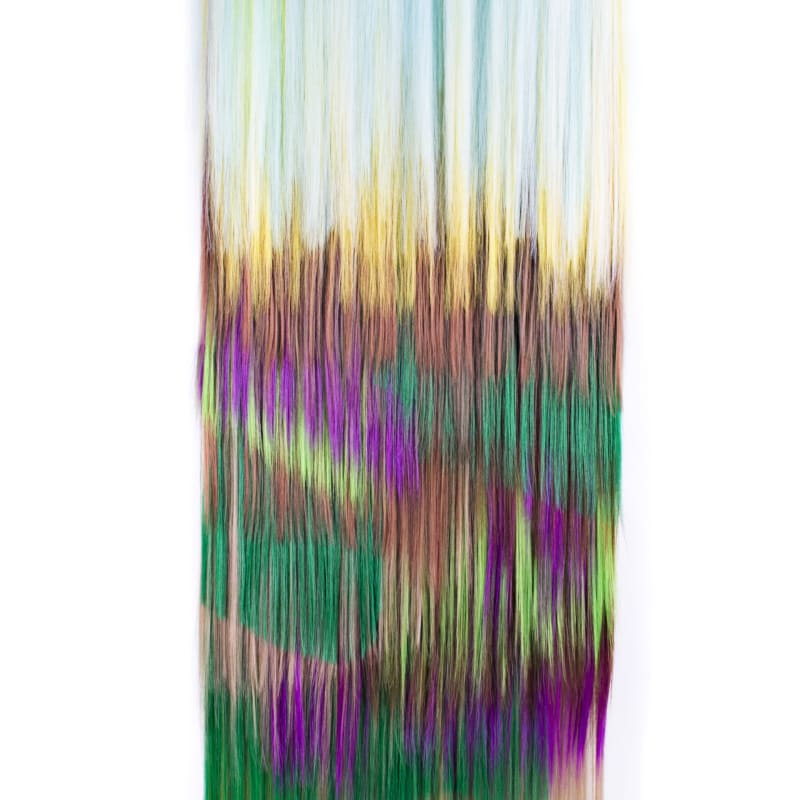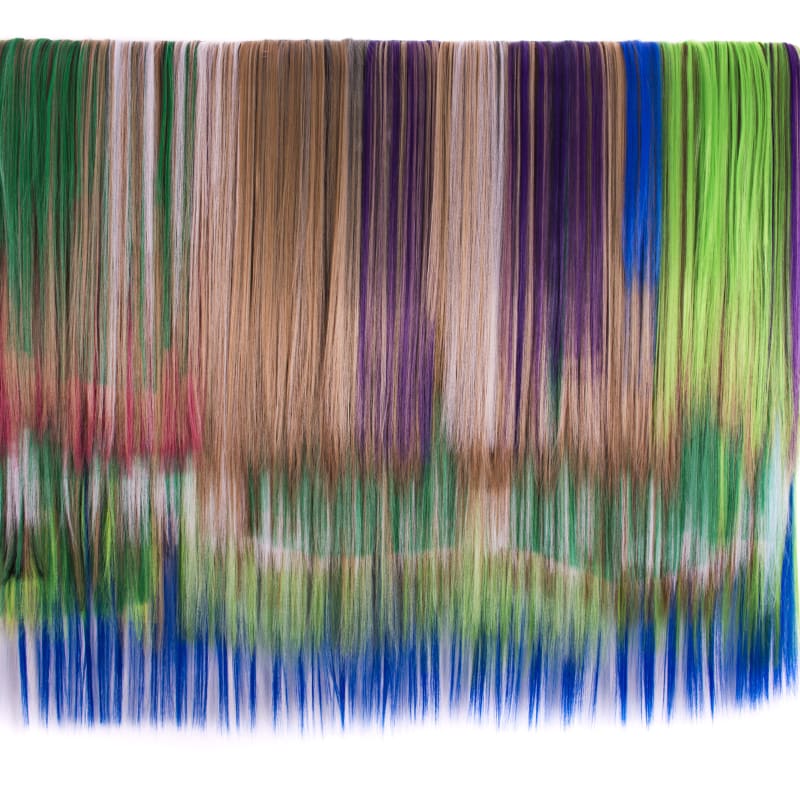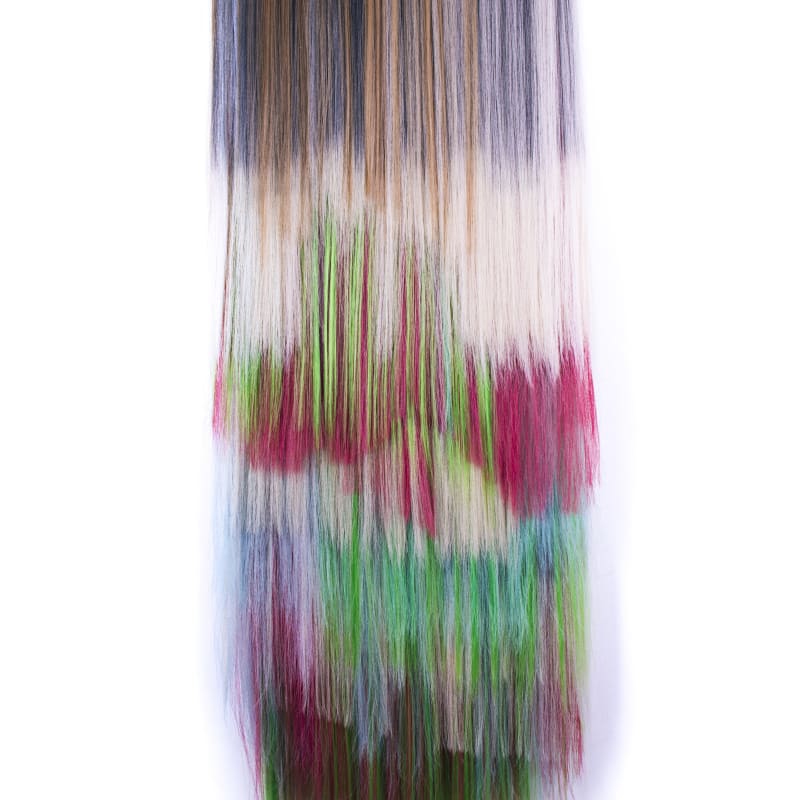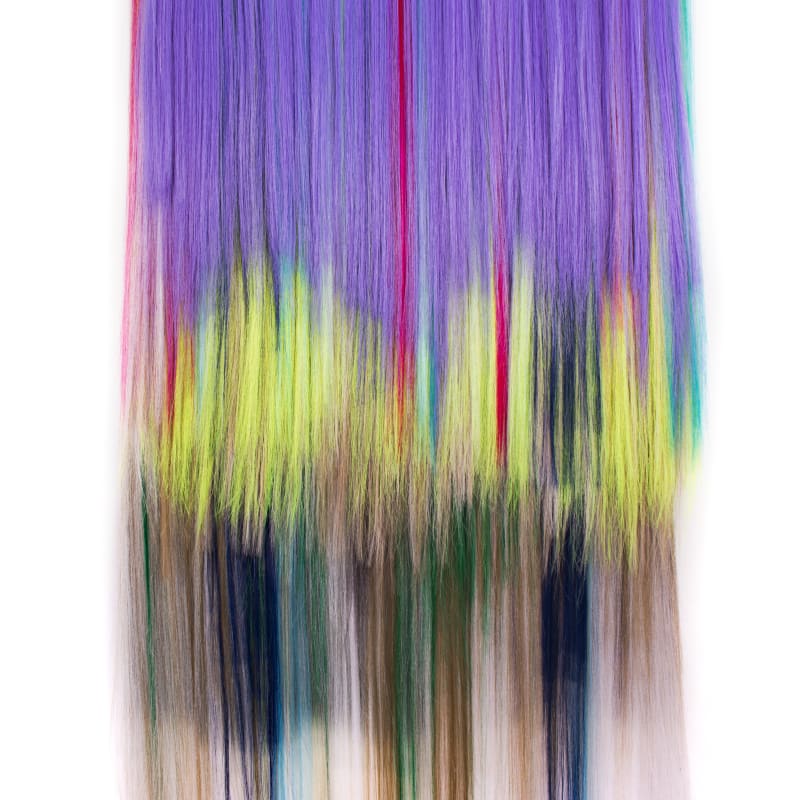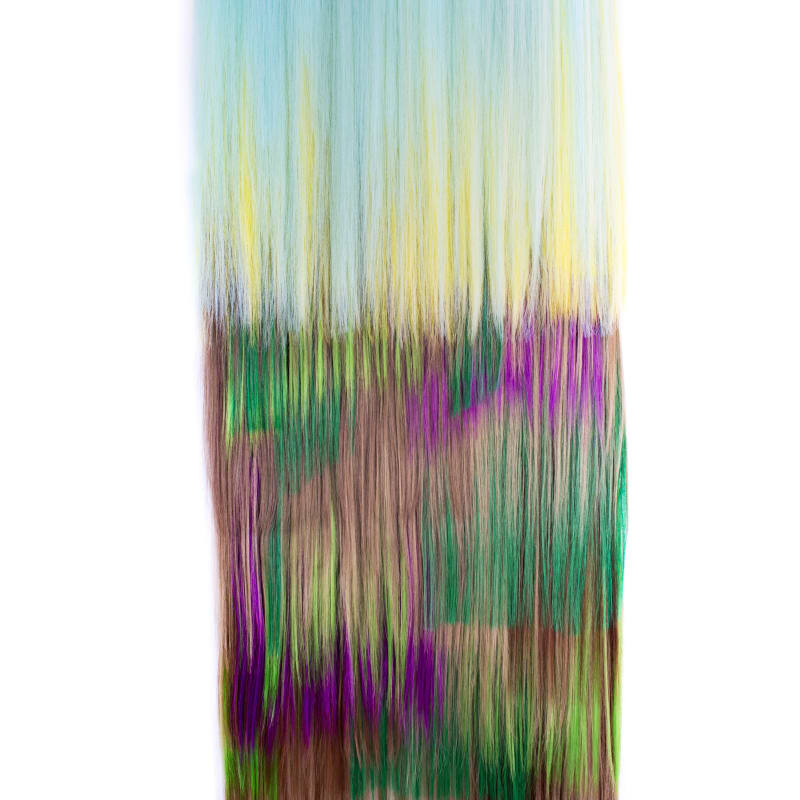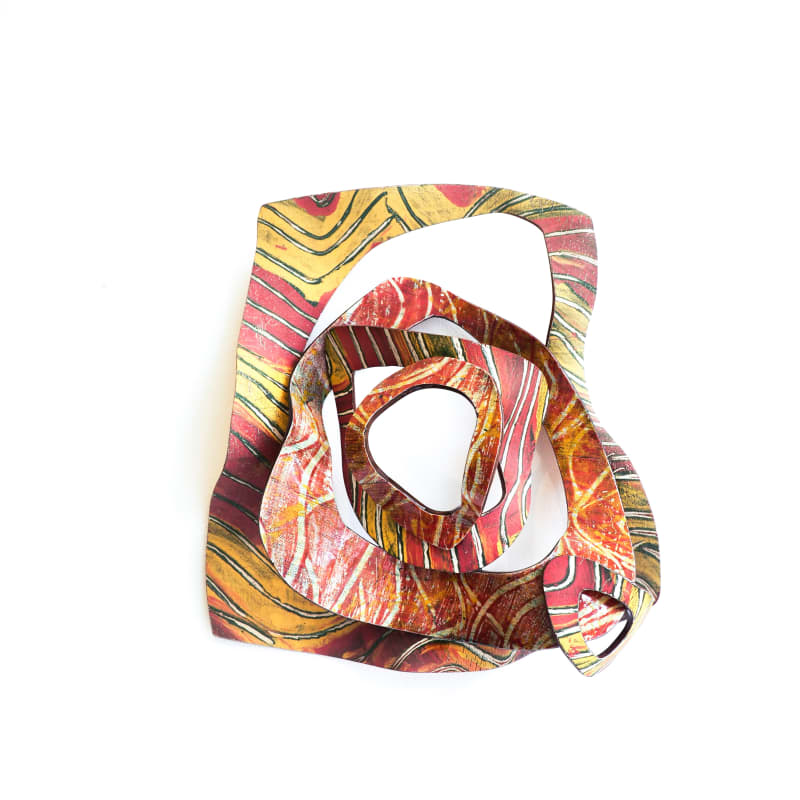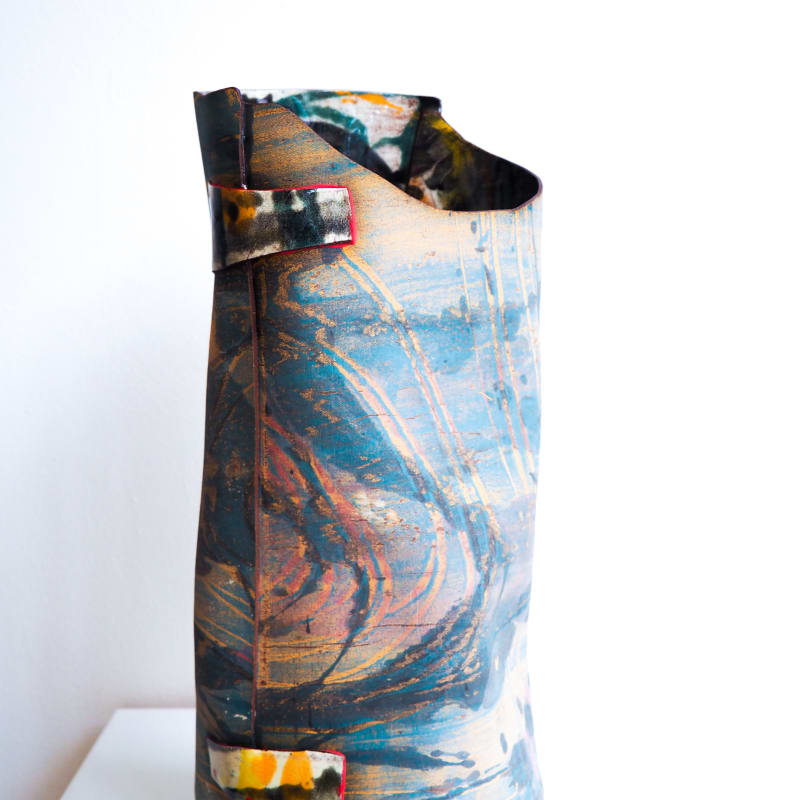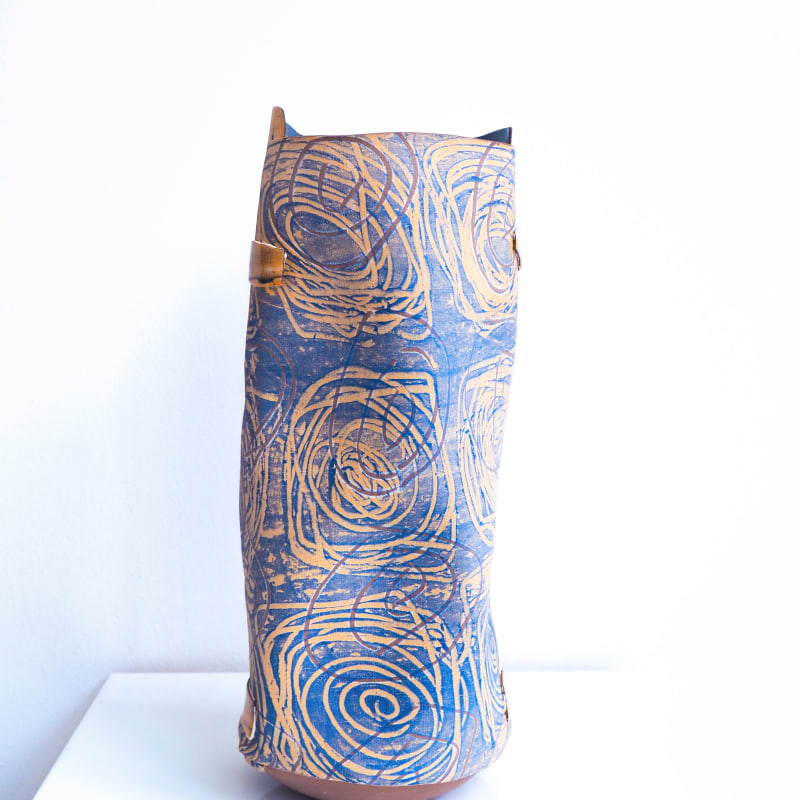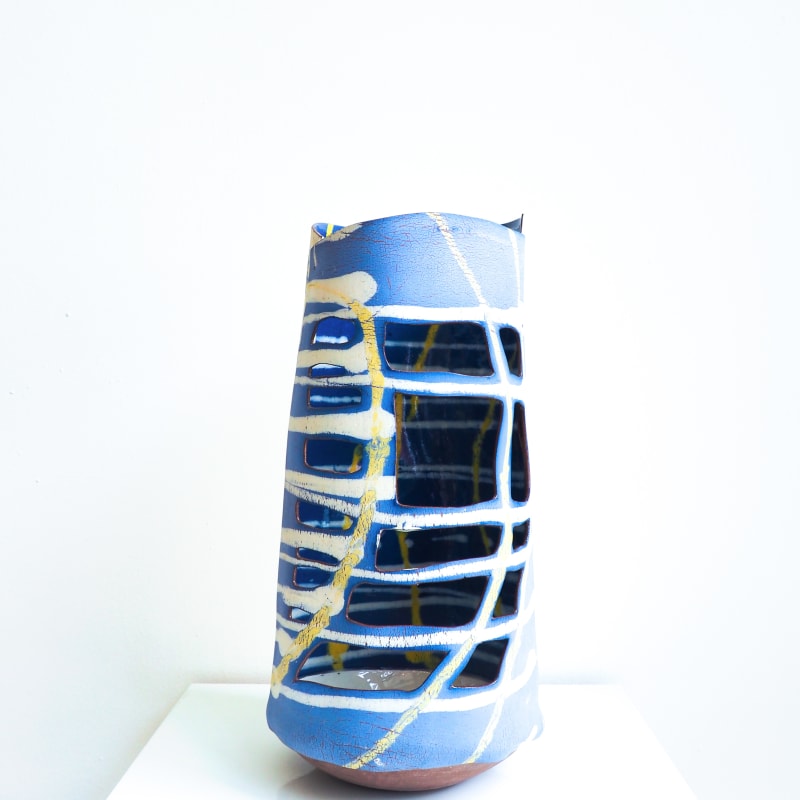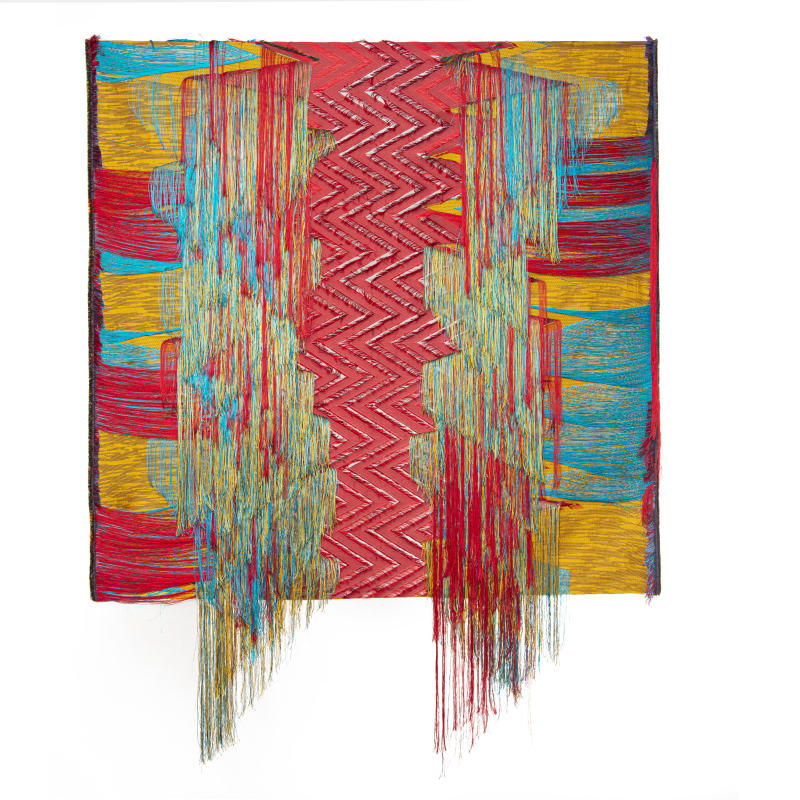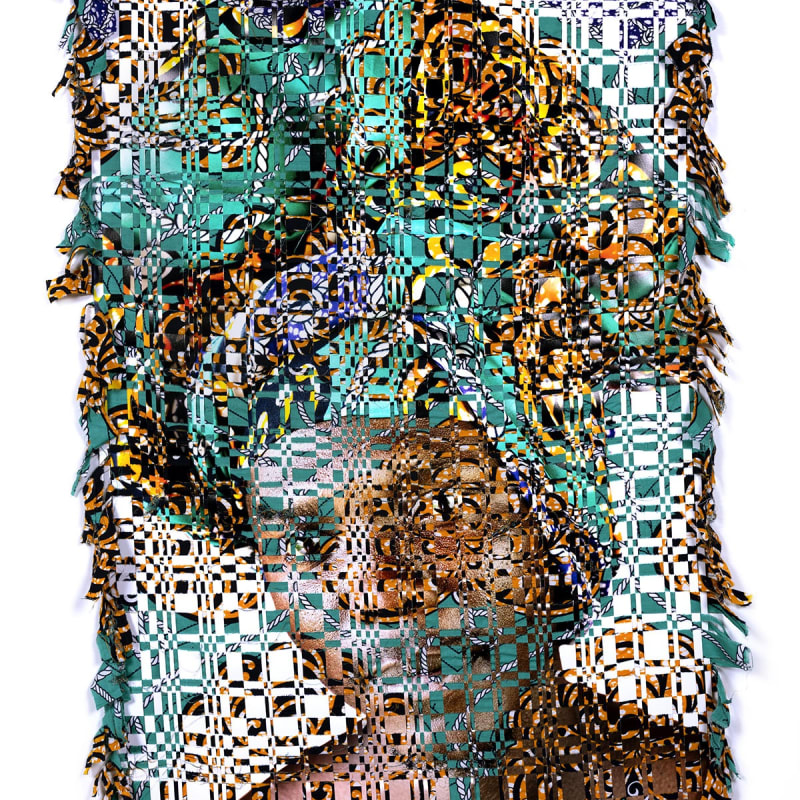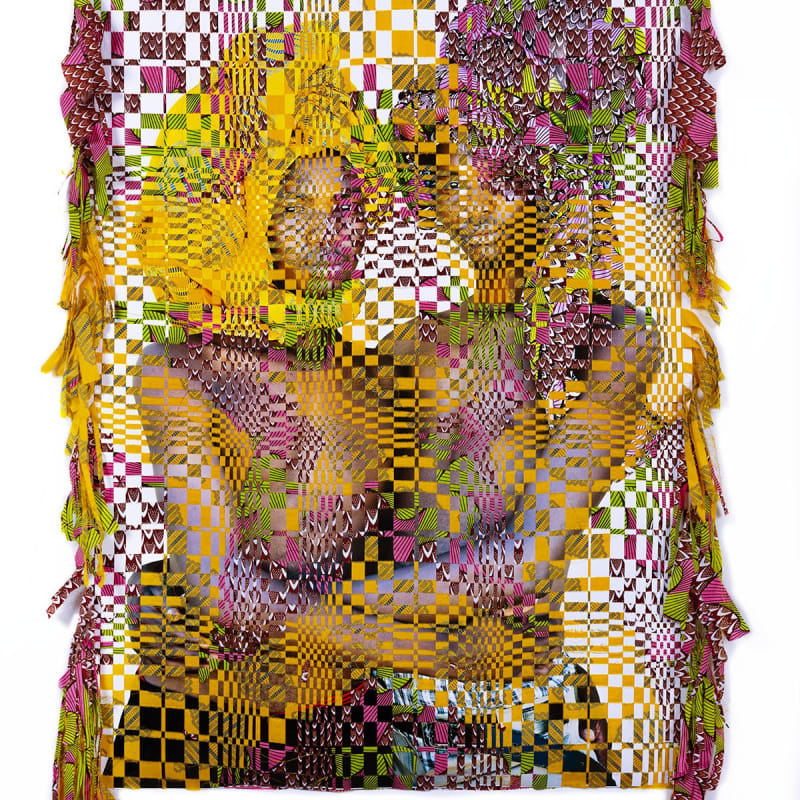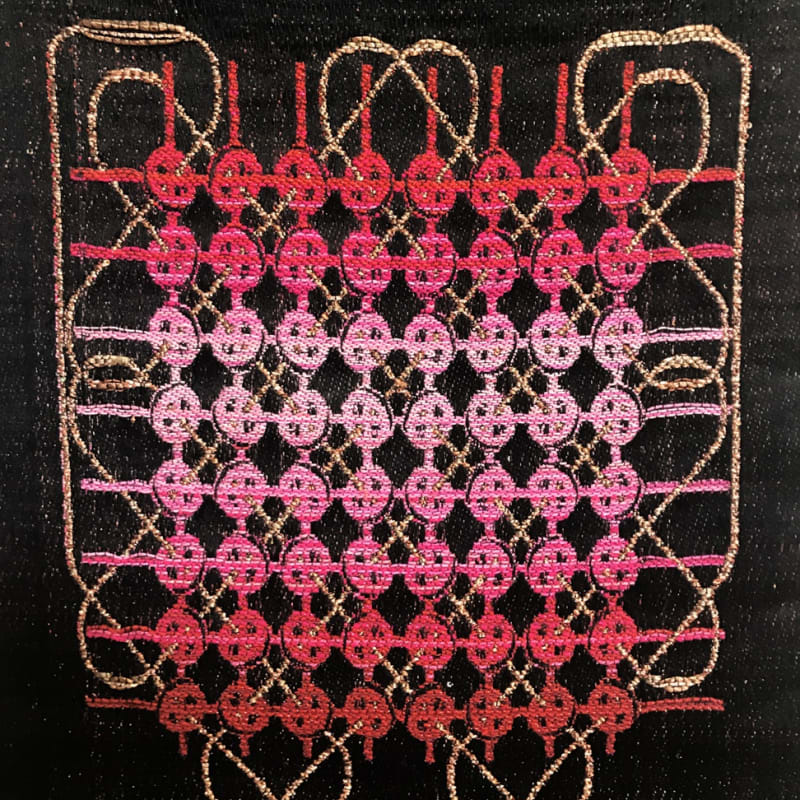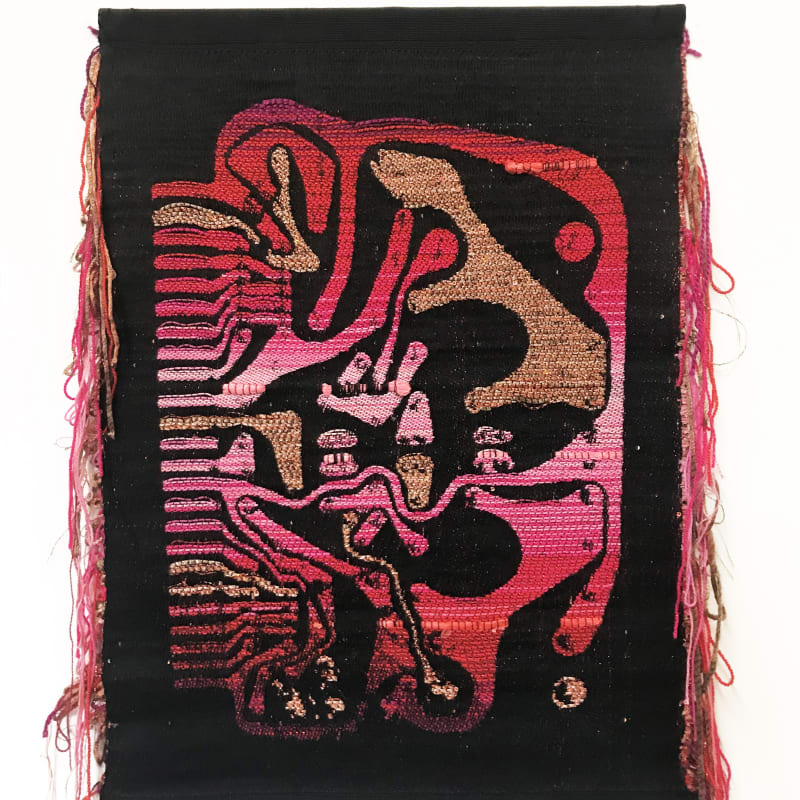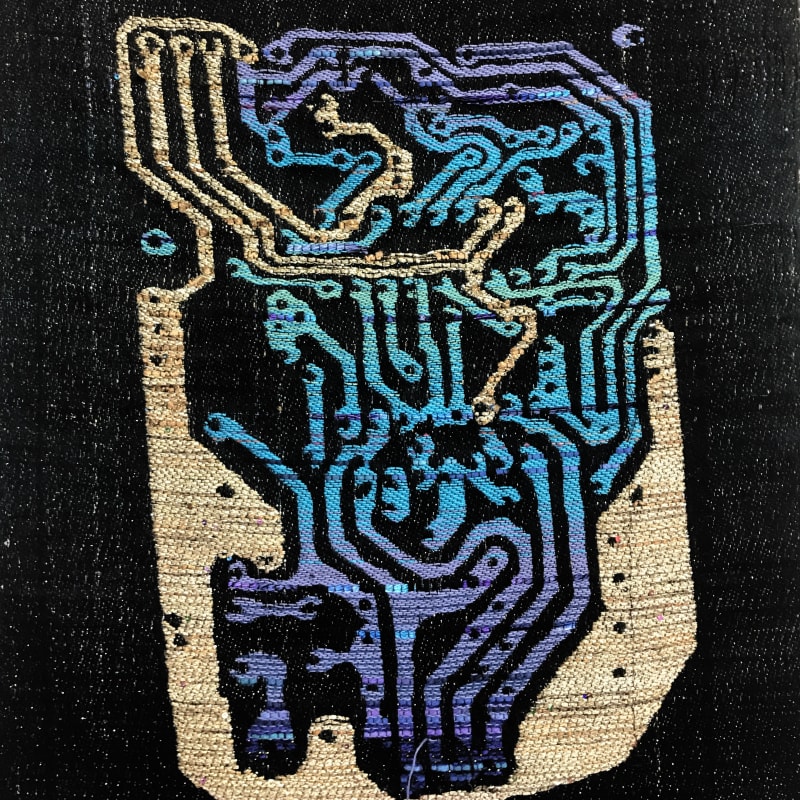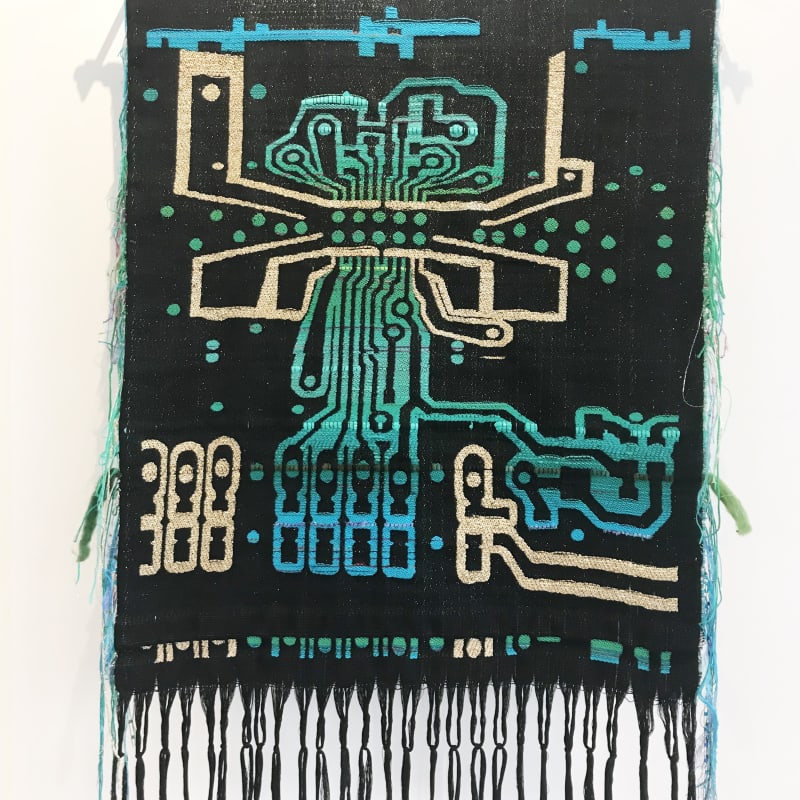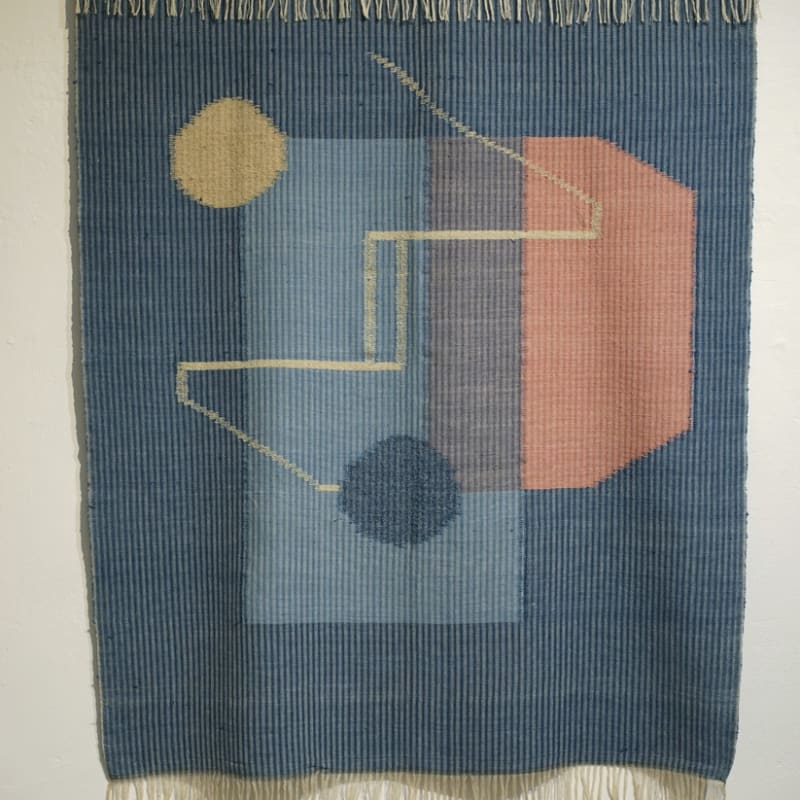Private View: 7th of November
Amina Agueznay, Hiva Alizadeh, Ranti Bam, Liz Collins, Kyle Meyer, Outi Pieski, Erin M. Riley, Robin Kang and Sinta Tantra.
As our world becomes increasingly digitised, Kristin Hjellegjerde Gallery Berlin presents a group exhibition celebrating traditional craftsmanship and tangibility. Strangers in Townbrings together the works of nine international artists whose practises examine different forms of materiality through dynamic methods of stitching, weaving, carving and painting.
Cultural dialogue and collaboration is at the heart of Amina Agueznay’spractise. The Moroccan artist works with local artisans to create jewellery and installation artworks, often utilising raw materials found in natural landscapes. In this way, Agueznayexplores how tradition can be both preserved and progressed in the modern world.
Similarly influenced by cultural traditions, Hiva Alizadeh modifies the methods of the nomadic carpet weavers of Kurdistan to create kaleidoscopic artworks. Viewed from a distance, these works appear to be shimmering and fluid, whilst closer inspection reveals layers of vibrant synthetic hair. This deception of materiality plays with the viewer’s expectations, offering a new perspective on both craft processes and textiles.
Ranti Bam describes her work with terracotta clay as ‘an intimate form of personal and social exploration.’ The final sculpted objects reveal the presence of the artist’s hands in their contours and visible fragility. Though embellished with bright colours and patterns, the shapes are often reminiscent of naturally occurring forms, and possess a grounded quality that connects the crafted object back to its origin: the earth.
Working with her signature vivid palettes and dynamic patterning, Liz Collin’s pieces explore the boundaries between entities with fluid stripes that seem to collapse and liquefy, flowing down one canvas and up into another. Thus, the artist challenges our perceptions of an object’s stability.
Working from eSwatini (formerly Swaziland), Kyle Meyer’s practise combines photography with weaving techniques to create conceptually layered, tactile artworks. The process begins with the artist photographing a male subject wearing a head-wrap traditionally worn by women, this image is then printed large-scale and hand-shredded before being woven back together with the fabric from the head-wrap. Through this fusing of mediums, Meyer questions the potency of digital photography in relation to the representation of identity and self.
Finland-based artist Outi Pieski finds inspiration in the natural landscapes of the country’s Sámiarea where she grew up. Often combining acrylic paints with textiles or hanging threads, Pieski’s work has a mythical, otherworldly quality that seems at once familiar and distant. In this way, she explores the nature of both personal and collective memory.
Erin M. Riley subverts digital culture by depicting millennial scenes in woven tapestries. For this exhibition, she presents part of a series of self-portraiture, documenting herself within the homes of lovers and friends. ‘Taking these pictures at those times was an affirmation of the physical self, a stabilising beacon which showed me that I am still me,’ comments the artist.
In a similar way, Robin Kang explores symbolism by bridging together ancient techniques of weaving with contemporary computer technology. The artist generates hand-drawn digital graphics, inspired by integrated circuit hardware, then translates the pixels into vibrant woven patterns on her Jacquard loom. By combining methods from the physical and digital realms, Kang invites consideration of the relationship between textiles, information systems, language, and memory.
Also working with weaving methods, Sinta Tantra presents a new body of work created in collaboration with local artisans from her village in Bali. Stepping away from her large-scale, abstract pieces, the artist embraces intimate, handmade processes and native natural dyes to combine Balinese craft with Bauhaus influences.
Presenting a global body of work from Morocco, Iran, Finland, Bali, Nigeria and the USA, Strangers in Town offers a powerful demonstration of cultural convergence, reaffirming art’s ability to break through boundaries and reinvigorate tradition. In this sence, the exhibition title offers different interpretations, not least an ironic one.

